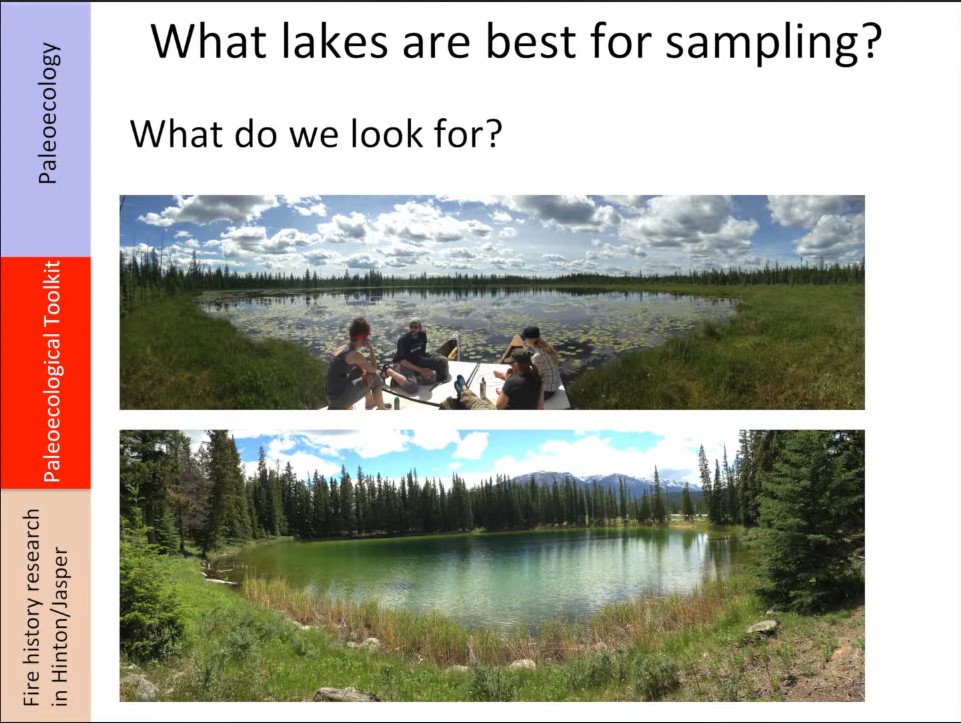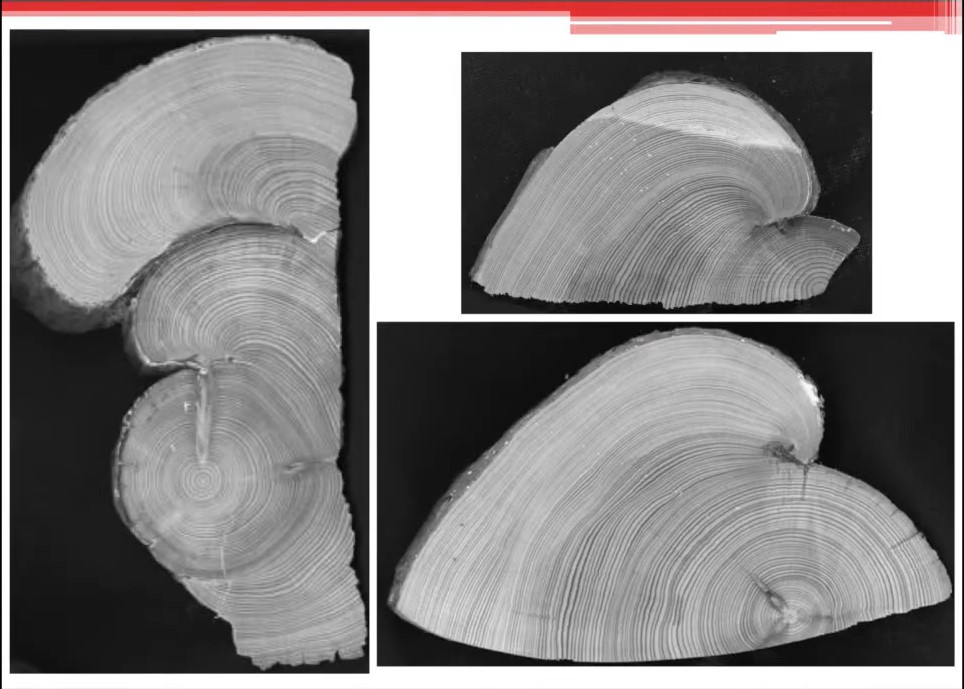
Where do you look for evidence of fires that burned thousands of years ago? In the bottom of a lake. Dr. Michael Pisaric describes how coring lake sediments gives us information on fire history, providing data on fire frequency, severity and what actually burned. And cores of lakes sediments gives us data that can be matched to tree burn scars but also can extend the record of fire for thousands of years into the past. Paleolimnology is an important tool for extending our historical records on climate and natural processes back thousands of years. By looking at macroscopic charcoal deposited into small lakes during forest fires, we can determine fire frequency, fire intensity and the species that burned during the fire.
In Part 1 of his presentation, Dr. Pisaric describes the sampling techniques (gravity core and Livingstone piston core), the types of lakes (small. level lakes) and the analytic techniques used in the Alberta montane forest fire paleolimnology studies (Hinton and Jasper National Park). Classifying microscopic carbon in the lake sediments can be sorted by morphology into different groups (grasses, needles, etc.). Dr. Pisaric introduces the question of dating sections of the lake sediment core at the end of Part 1.
Dr. Michael Pisaric is an Associate Professor at Brock University, St. Catharines, Ontario. His presentation was part of the July 10, 11 2013 Workshop and Tour on Burning Issues in Alberta’s Forests: Fire Regimes in the Montane Forests of the Alberta Foothills and Jasper National Park. The workshop was sponsored by the Healthy Landscapes Program at the Foothills Research Instititute, Hinton, Alberta.








